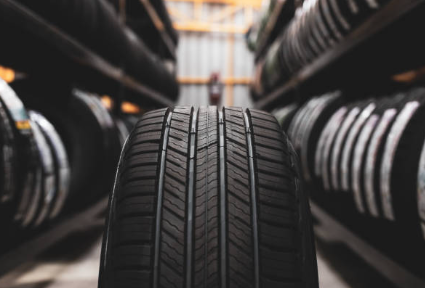Broker Says ‘tread carefully with commercial vehicle risk management’
22.02.23 · News

Specialist fleet insurance broker, McCarron Coates, is calling for increased focus on tyre risk management, in a month coinciding with the second anniversary of legislation banning the use of tyres aged over 10 years, in certain situations.[i]
Fleets must comply with the age restriction introduced in February 2021. Failure to do so would greatly increase the likelihood of culpability in an accident and DVSA fines and penalties. Any director or manager negligence could also lead to individuals being found personally liable.
The tyre-tread depth requirement for commercial vehicles must be met. This is a minimum of 1mm on a continuous band throughout the central three-quarters of the tread’s width over the entire tyre circumference. The original tread pattern must also be visible in the remaining one-quarter. If not, fines of £2500 and three penalty points per tyre can be levied.
This element of compliance should be assisted by that of the daily walk round check. McCarron Coates says commercial fleet operators should be proactive about this duty and file evidence of its completion. Electronic, rather than paper-based evidence, can be more secure.
Using advanced software to assist with this can show an insurer that the commercial vehicle operator is a good risk. HH Driveright’s Artificial Intelligence-backed Damage Capture system, for instance, automatically detects and logs vehicle damage, including that to tyres.
McCarron Coates says good risk management is also about going beyond minimum tread levels. It says fleet managers should not run tyres below a 3mm tread, for several reasons. Firstly, if vehicles do not return to a depot every day, additional tread provides greater certainty over compliance whilst out on the road.
Secondly, it provides leeway to fleet operators lacking the tight control regimes of larger firms who run tyres to 2mm of tread, to maximise tyre life. These firms tend to have the resources to ensure action is then immediately taken. In smaller firms, things can slip through the net.
Thirdly, a 3mm tread limit is sufficient to allow a better-quality tyre to be regrooved, which can increase life by 25%, rejuvenating the tyre to become as efficient as a half-worn one.
However, McCarron Coates advice comes with a proviso. Whilst 3mm of tread may offer a good level of risk protection on a quality tyre, the same equivalent on a budget tyre might be 8mm. Operators need to know and understand their tyres.
Experts suggest lower-quality tyres can require a significantly greater distance in which to bring a vehicle to standstill.[ii] Using cheaper tyres might lead to greater collision damage or injuries, as a result. Budget tyres are also less fuel-efficient and may need replacing quicker.
McCarron Coates wants operators to recognise the fundamental importance of tyres to risk management and believes driver training on this entire aspect should be enhanced.
“Fleets should better explore driver knowledge on legal tyre tread limits, what constitutes a damaged tyre and how to spot under and over-inflation. Enhanced behaviours, such as driving at lower speeds, avoiding harsh braking and not driving on over-inflated or under-inflated tyres, can extend tyre life and make life safer for all road users,” says director, Ian McCarron.
“Fleets should instigate regular tyre checks and ensure drivers understand stopping distances and how these fluctuate according to weather and road conditions and load carried. An 18-tonne truck requires a much shorter stopping distance than a 44-tonne truck needs.”
For help with other aspects of risk management – the cornerstone on which better insurance offers are made to insureds by insurers – bus, coach and HGV fleet operators can contact McCarron Coates on 0113 298 3489 or visit mccarroncoates.com/talk-to-us
[i] Legislation https://www.mccarroncoates.comnow prevents tyres over a 10-year age limit being fitted to the front-steered axles of HGVs, buses, coaches or any of the single wheels of a 9-to-16-seater minibus. The law also requires the code that indicates the date of tyre manufacture to be visible.
[ii] https://www.commercialfleet.org/fleet-management/safety/into-the-groove-tyre-management-made-easy
